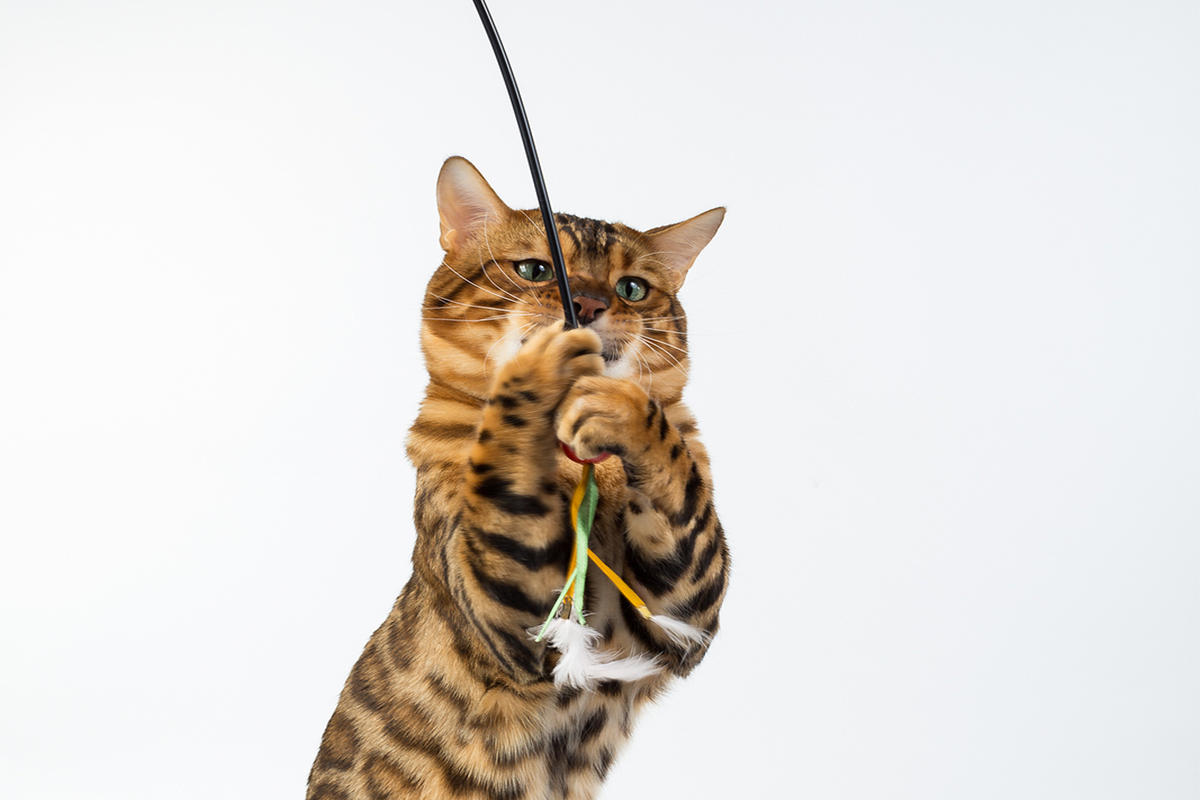Cats can make great pets when we learn what each one needs to thrive, and then meet these needs. When we do, we have cats who are friendly, active, and safe. That makes them the great “low maintenance” companions we enjoy. But when things go wrong, fear, anxiety, and stress can be the result in both our cats and ourselves.
So what do cats need to thrive in Fear Free Happy Homes? First, they have a few basic needs: a safe “home base”; a meal appropriate for their age and pleasing to their taste; clean fresh water; a litter box; places to climb and to scratch; and time for play. Let’s talk briefly about each one.
- A safe home base is a place in your home where the cat can go to be left alone, just like many people have an office, bedroom, or “cave” they can go to, close the door, and feel safe and comfortable. Once you find such a place (your cat may already have shown you by hanging out there on her own), you can put her carrier there so it becomes part of her safe place.
- Pleasing food means one that both you (some people have strong personal beliefs about pet foods) and your cat enjoy. Once you decide what you want, buy a few different foods and offer them to your cat so she can tell you what she likes best by which one(s) she eats most readily. Put her food in a quiet place where she won’t be disturbed while eating. You can really help your cat thrive by feeding her from a food puzzle (http://foodpuzzlesforcats.com).
- Fresh water can be still (in a bowl) or running (a dripping faucet or pet fountain). As with food, offer choices so your cat can indicate what she prefers.
- Just as most humans prefer bathrooms to small portable toilets, soft, cushioned toilet paper, and a door that we can close for privacy, cats prefer to use large (14 by 18 inches or more) litter boxes with unscented clumping litter of their choice in a safe quiet place.
- Cats need to be able to climb and to scratch; that’s a given. We want them to do it in some places but not others. You can let your cat know which places you prefer by making them attractive: put her favorite treats or scents on them (catnip, for instance). Help her avoid ones you don’t want used by putting sticky tape, foil, or repellent odors such as citrus on them. Yelling, hitting, or throwing things at cats will not help them learn what you do and don’t want from them, but will cause both of you to suffer fear, anxiety and stress!
- Cats love to play for short periods of two to five minutes at different times of the day. Different cats like to play with different toys, so offer choices that resemble different types of prey (birds, bugs, small furry critters) to see what she likes best.
Now that you’ve met all your cat’s basic needs, asked her what she likes, and put her choices in all the right places, how do you know if she will thrive? Just watch what she does. As I said at the start, when we meet our cats’ needs, they are the friendly, active, and safe pets with whom we enjoy sharing our homes. To get you started, here is a FORM you can use to see how well your home meets your cat’s needs.
This article was reviewed/edited by board-certified veterinary behaviorist Dr. Kenneth Martin and/or veterinary technician specialist in behavior Debbie Martin, LVT.
Want to stay in the loop on the latest and greatest in keeping your pet happy and healthy? Sign up for our free newsletter by clicking here!








